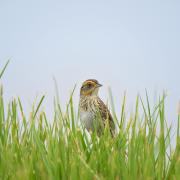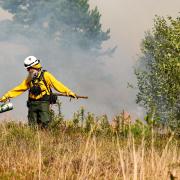
Advanced Warden School: Weeks 1-3
Maine Game Wardens undergo rigorous, comprehensive training before earning their badge. Follow along as the Advanced Warden School 2025 class completes training.

Stop the Spread: Protect Maine’s Waters
An aquatic invasive species is an unwelcome guest in our waters. Prevention is key. Maine's Lake and River Protection stickers help fund aquatic invasive species prevention, education, detection , and response.

Finding Solutions for Ospreys and People
Maine’s healthy osprey population able to thrive in almost any location with accessibility to shallow water fishing and an elevated nest site. They are highly adaptable, and often nest on utility poles and transmission towers. These nests can be problematic both for the birds and for people.

Celebrating Women's History Month
MDIFW is remembering and honoring two remarkable biologists who helped pave the way for women working in Maine’s wildlife and fisheries professions.

There are more early season fishing opportunities than you think…
There is no longer a need to pass emergency rules to open the fishing season with an early onset of spring in Maine. Here's why...

First Year of New Program Shows No Sign of Invasive Zebra Mussels
The use of eDNA sampling allows for detection of organisms without the need to trap, locate, or otherwise physically observe or handle them which can make it possible to detect new populations of invasive species, like zebra mussels, early on.

Maine Adds Eight New Species To State's Endangered and Threatened Species List
Eight new species were added to Maine's Endangered and Threatened Species list, including five birds, one bat, one bee, and a beetle. Two of these species, the saltmarsh sparrow and Ashtons cuckoo bumble bee, are listed as Endangered, and the other six as Threatened.
Black-capped Chronicle Issue 11 – Winter 2022/2023
A new issue of the Maine Bird Atlas’ newsletter, Black-capped Chronicle, is now available!

Fired Up about Conservation
The first Prescribed Fire Training Exchange (TREX) to be held in the Northeast brought collaboration, mentorship, outreach, and fire to the sandplain grassland of Kennebunk Plains Wildlife Management Area. Prescribed burns are tactically designed with two main objectives: restore ecosystem function and decrease uncontrollable wildfire risk.

Recovering America’s Wildlife Act (RAWA)
Recovering America’s Wildlife Act is an opportunity to protect and enhance fish and wildlife in Maine and the United States for future generations.
Keep In Touch!
Enter your email or mobile number to receive the latest news from MDIFW.